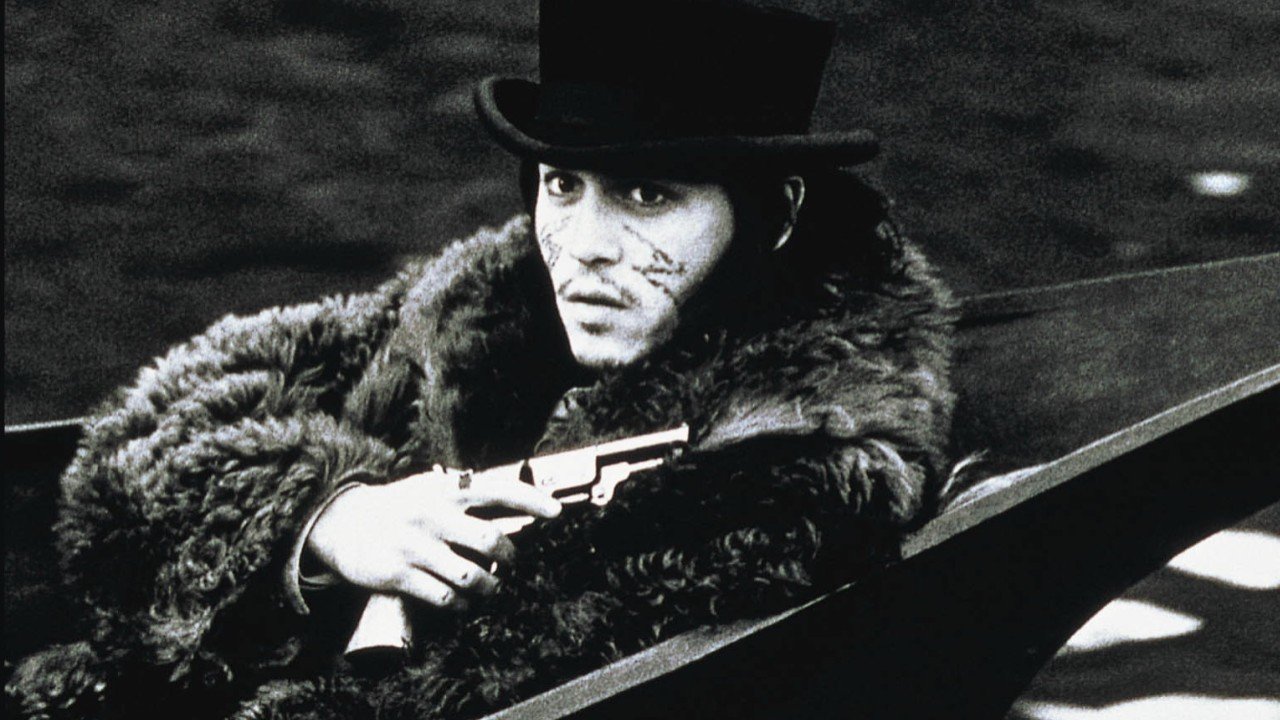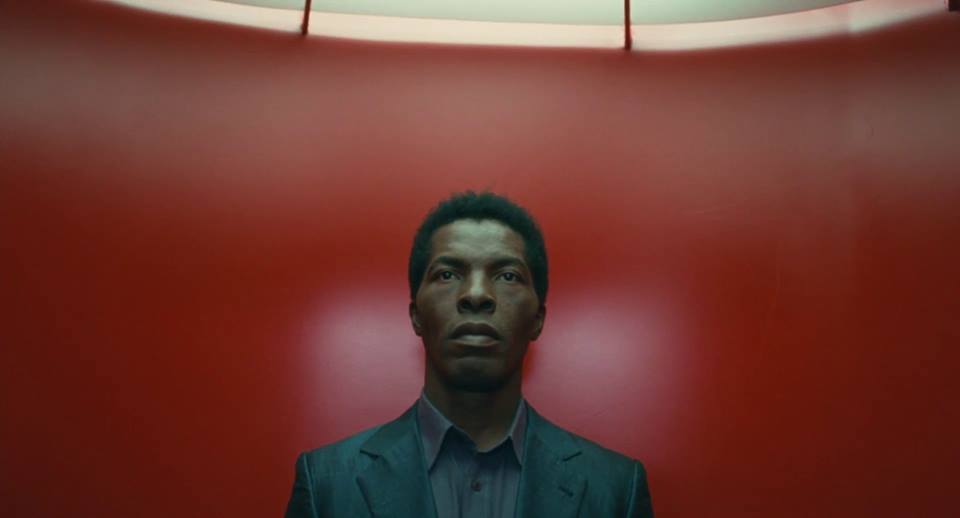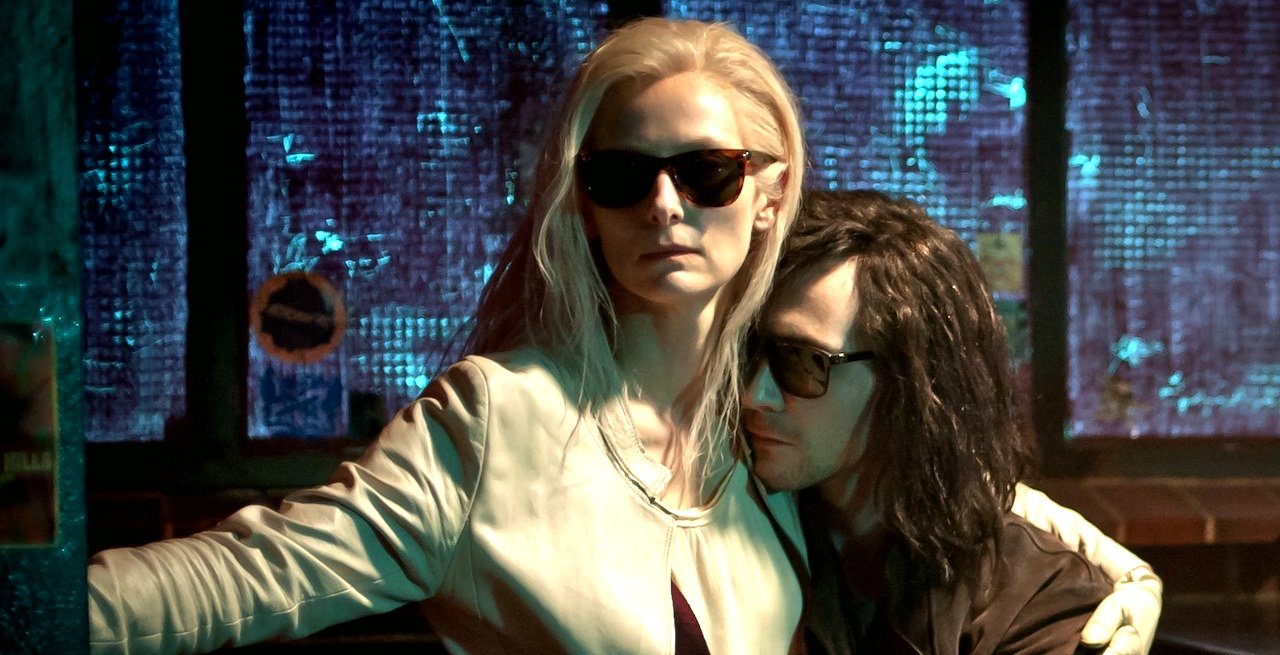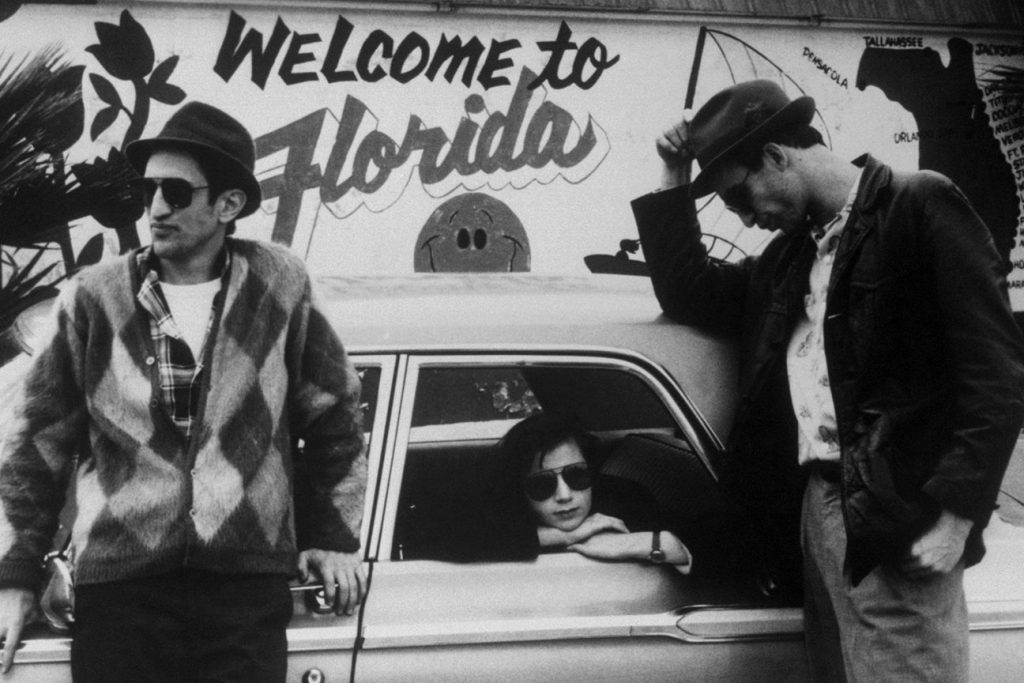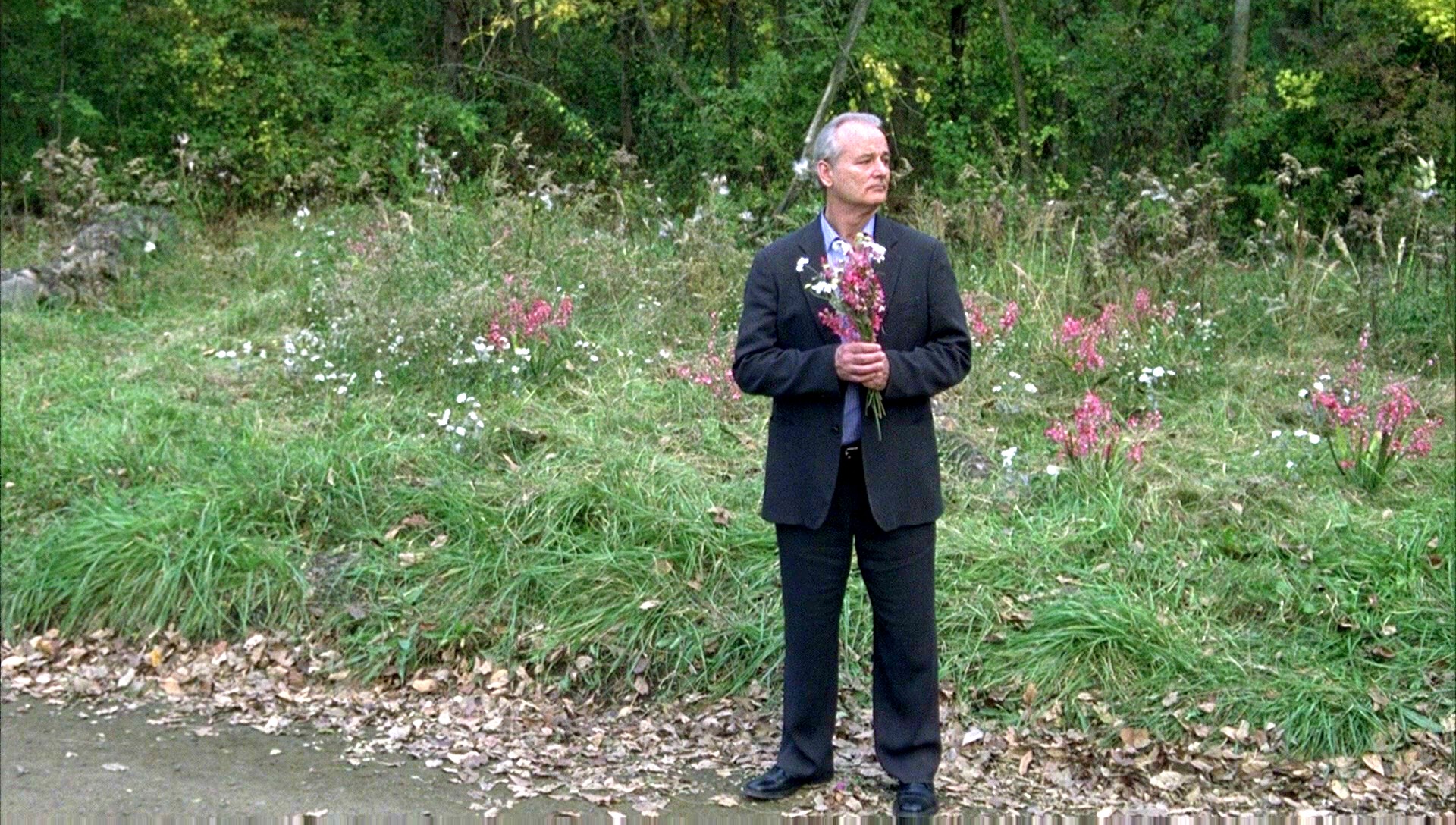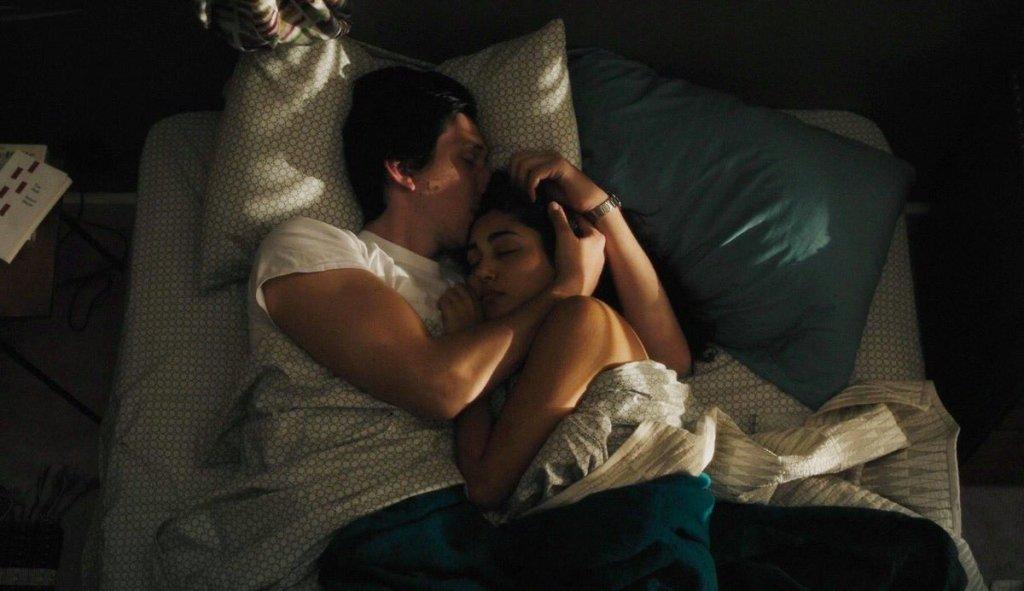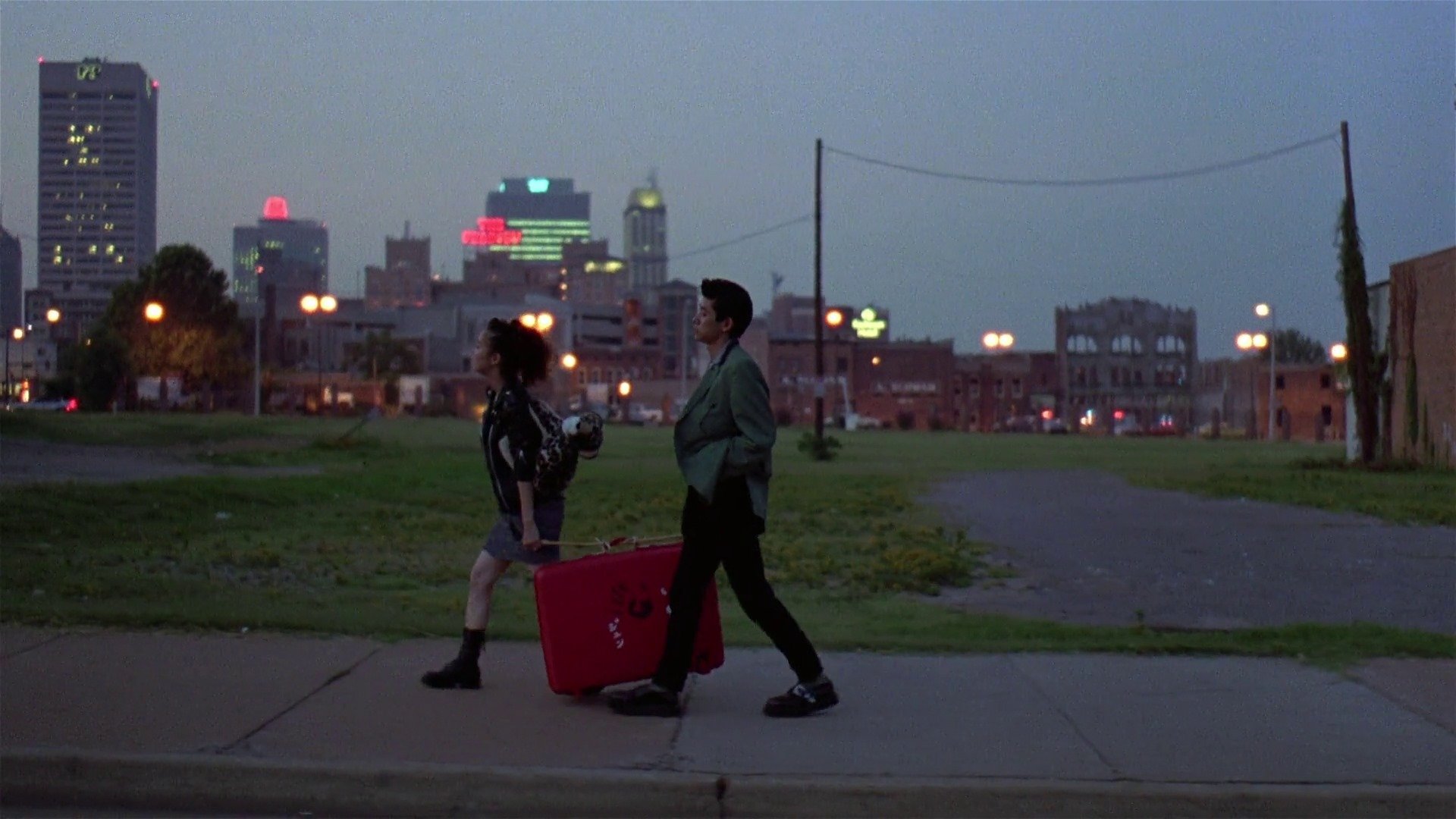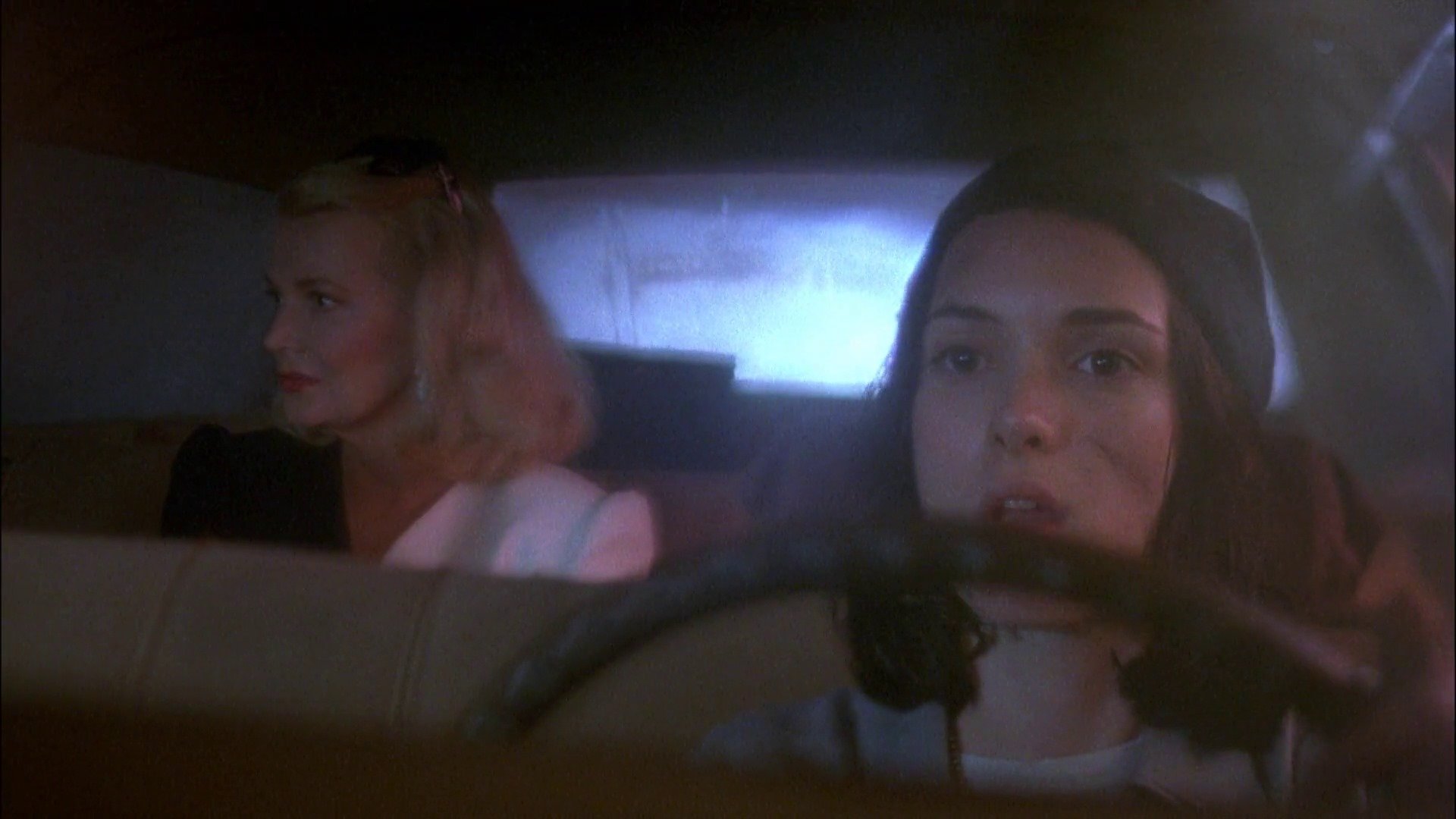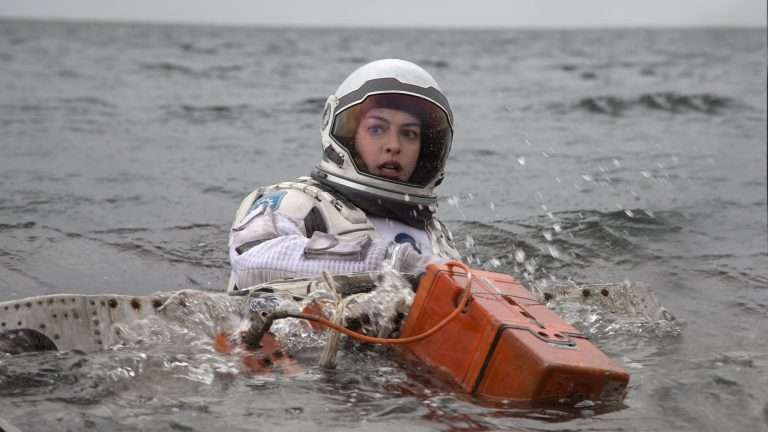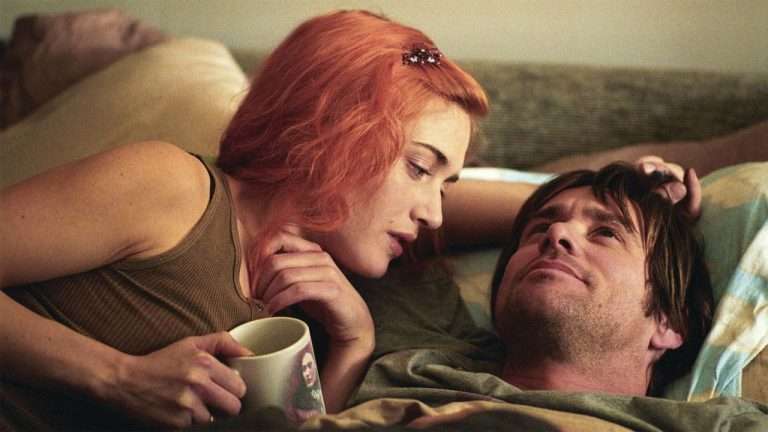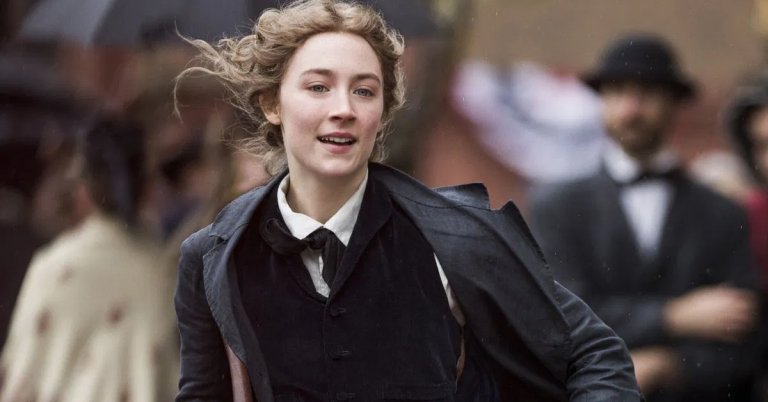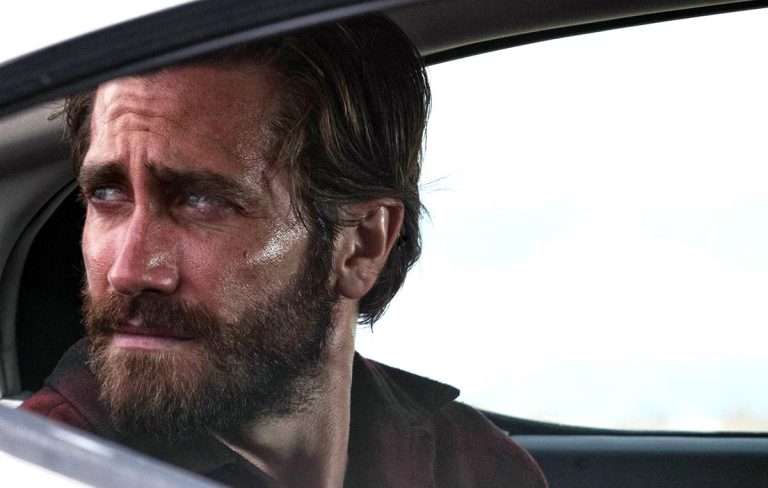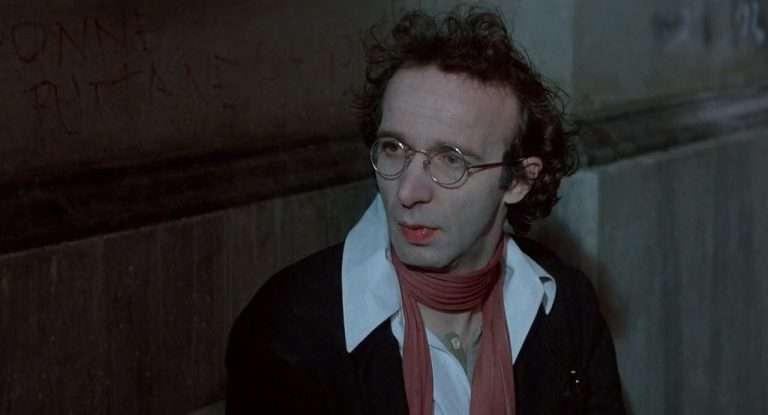One of American cinema’s most revered and influential directors, Jim Jarmusch is a singular voice in Hollywood, molding mainstream actors and genres to suit his dry sense of humor, great eye for cinematography, and taste for the absurd. Over four decades of film-making, the auteur has managed to create one of the most distinctive oeuvres in the world of independent film, littered with black-and-white modern classics, diverse anthologies, and subversions of the B-movies he was raised on. He channels the ethos of Cassavetes with the cinematic appreciation of Tarantino, and though his filmography has more than its fair share of duds (and perhaps even a few pictures unworthy of their lofty stature), it’s one of the most fascinating and varied out there, so here it every Jim Jarmusch movie ranked from worst to best.
Related to Jim Jarmusch: 75 Best Movies of The 2010s Decade
13. Permanent Vacation (1980)
It’s hard, borderline impossible, to compare this scrappy curio of the No Wave movement with the polished all-star indie classics its director would go on make, but divorced from context and viewed purely as a piece of film art, there’s no denying that Permanent Vacation is the most redundant and unwatchable movie on this list. Filmed on 16mm shortly after Jarmusch dropped out of NYU, the dialogue coverage and meandering semblance of a plot demonstrate the kind of appreciation of mundanity that would color his later, more celebrated, works yet without any strong thematic keystone to the film, the experiment falls apart at the seams. Perhaps it works better as a documentation of a time, place, and state of mind more so than a film to be consumed and enjoyed for entertainment value alone.
Also, Related to a Jim Jarmusch Movie – Gueros [2014]: A Romantic & Insightful Take on ‘Slackerdom’
12. The Dead Don’t Die (2019)
Jarmusch’s latest venture into the world of direct genre cinema is an unfortunately middling affair. A playful yet frustratingly surface-level riff on the zombie movie, the typically dry sense of humor and choice selection of faux-hipster stars (Murray! Waits! Sevigny! Buscemi!) can only bring The Dead Don’t Die to an inoffensive, passable level of quality. Simply put, Jarmusch’s meta, self-referential approach can’t help but sound pale in comparison to the sharper and more emotionally resonant edge of Edgar Wright’s Shaun of the Dead (2004), which will forever remain the gold standard for such horror comedies. It doesn’t have much to say or add to the conversation aside from an obnoxiously ironic take on the “we are all zombies” approach first taken by George A. Romero over fifty years prior; ultimately it just feels like an unnecessary detour within his cinematic arsenal, and a crushing disappointment after his brief return to form earlier in the decade.
Also, Related to Jim Jarmusch Movie – The Dead Don’t Die [2019]: ‘Cannes’ Review – A peculiarly disappointing attempt at deadpan
11. Coffee and Cigarettes (2003)
Though in execution, much of 2003’s Coffee and Cigarettes is incredibly small-scale and mundane, behind the scenes, it stands out as one of Jarmusch’s most ambitious projects. A series of eleven short films shot over seventeen years and starring performers as diverse as Steve Coogan, The White Stripes, and the Wu-Tang Clan, it’s certainly a unique undertaking, but as opposed to the more restrained and numerically limited anthologies Night on Earth and Mystery Train here there are more misses than hits. Though some shorts amuse in their charming dialogue exchanges and others in the pure novelty of their casting choices (Bill Murray and GZA and RZA make a strangely inspired combination), most bore with their complete meaninglessness and lack of relation to each other. Worth a watch if you’re a die-hard fan of Jarmusch’s style of laidback conversational screenwriting, but otherwise a missable detour.
Related to Jim Jarmusch’s Movie – Coffee and Cigarettes [2003] Review – Discerning the Sublime among the Quotidian Banality
10. Dead Man (1995)
For many film fans, this placement for Dead Man will appear criminally low, and it’s easy to see their viewpoint. Robby Muller’s stark black-and-white cinematography and Neil Young’s twangy electric guitar score, there’s plenty to admire and appreciate on a technical level about Jarmusch’s take on the Western, but thematic and narrative cracks begin to appear when the writer-director attempts to translate his typical style to this entirely new time period. In my opinion, at least, the execution falls somewhat flat, and the poetic, ethereal tone attempted by the screenplay is never carried out to its fullest effect. Add this to a disappointingly surface-level examination of the white man-Native American dynamic that has been done to death and in more compelling ways before and since, and you get one of the most overrated (albeit occasionally enjoyable) films of the ‘90s.
Also Related to Jim Jarmusch’s Movie – Dead Man [1995] Review: The Poetry Of The Sinners
9. The Limits of Control (2009)
Despite routinely ranking in the last place on many a Jarmusch ranking, I couldn’t help but take something of a contrarian stance on The Limits of Control, even if I can acknowledge its flaws. A mostly silent exercise in tone and mood, Ivorian actor Isaach De Bankolé stars as a nameless protagonist traveling through Spain and his state of mind in the most angular 116 minutes of Jarmusch’s career, and the film excels when reveling in its minimalism, with walks through the street and long nights in empty hotel rooms rendered gorgeous by Christopher Doyle’s typically effervescent camera. Problems start to emerge when Jarmusch lets his more arrogant and smarmy stylings intoxicate the picture, with cameos from the likes of Bill Murray and Tilda Swinton feeling more forced than ever in what is an otherwise challenging puzzle box of a film. After all, perhaps the reason the movie didn’t find an audience wasn’t because of its experimental style but because such a style has been carried out to much better effect elsewhere.
Also, a Jim Jarmusch Movie – The Limits of Control [2009]: Saving Creativity!
8. Only Lovers Left Alive (2013)
The first Jim Jarmusch movie to be shot on digital, the campy yet eerie vampire flick Only Lovers Left Alive is a more successful venture into arthouse-genre cinema if only because it seems to tackle its subject matter with less condescension and smarmy irony. It still has its flaws, this time ranging from inconsistent pacing and structural issues within the screenplay as well as a visual pallet that doesn’t feel quite on par with the director’s work with Robby Muller, but when it works, it works, and Tilda Swinton delivers one of the most delightfully enigmatic performances of her entire career. In other words, the very definition of a mixed bag.
Related to Jim Jarmusch – Only Lovers Left Alive [2013]: A Haunting & Hypnotic Mood Piece
7. Stranger Than Paradise (1984)
A landmark moment for American indie cinema, one finds it hard in the 2020s to separate the impact and influence of Jarmusch’s second feature, Stranger Than Paradise, from the quality of the film itself, and in my opinion, that quality is one of a sadly mediocre standard. I’ve always found it strange that the 1984 Cannes Film Festival awarded this film the Camera d’Or for best debut feature when Permanent Vacation had come out four years prior, but in hindsight, it makes perfect sense as this truly feels like the first movie with the distinctive auteur stamp. Starring and scored by John Lurie, the film is an enjoyably meandering take on the classic road trip movie, with the character tropes all established but unfortunately not expanded upon throughout. The film doesn’t overstay its welcome, though, and if you’re one for the almost otherworldly mundanity of early Jarmusch’s style, then it’s certainly worth a watch if all the critical acclaim elsewhere hasn’t already convinced you too.
Also, Read – Stranger Than Paradise [1984] – A Charmingly Low-Key Classic of American Indie Cinema
6. Broken Flowers (2003)
In some cases, supposedly “selling out” can be a good thing, and the charming 2003 dramedy Broken Flowers is a prime example of that. Released two years after the underwhelming Coffee and Cigarettes, the film sees Jarmusch re-discover his groove for witty, insightful explorations of loneliness through the lens of a traditional rom-com plot, with Bill Murray’s former Don Juan visiting the houses of four ex-girlfriends to discover the mother of his teenage son. The more classically constructed narrative gives the director’s style more thrust and bite, something which the excellent central performance compliments, and creates a pleasant anomaly in the filmography of an artist who’s never been afraid to dabble within the worlds of mainstream or experimental American cinema. It’s not perfect, but it was thoroughly enjoyable.
Related to Jim Jarmusch Movie – Broken Flowers [2005]: The Missing Petals
5. Ghost Dog: The Way of the Samurai (1999)
Jarmusch’s first, and by far most successful, stab at twisting the techniques of a well-established genre in Ghost Dog: The Way of the Samurai is an interesting and compelling little movie to watch unfurl. Buoyed by Forest Whitaker’s magnetic performance as the eponymous hitman, the allusions to both the samurai films of Kurosawa and the crime films of Jean-Pierre Melville (particularly 1967’s Le Samourai) are evident, and for once, feel at home when filtered through the postmodern screenplay, which includes many a hilariously memorable line of dialogue. Like Broken Flowers, Ghost Dog is in many ways a very accessible and mainstream entry into today’s ranking, but it stands out for craft, themes of morality and mortality, and, of course, a killer soundtrack courtesy of RZA.
4. Paterson (2016)
21st-century Jim Jarmusch movies indeed tend to get lost in their air of meta, self-referential, insufferable irony, but for a brief moment in 2016, the director showed how he could, still, when in form, create gorgeous examinations of the human condition. Paterson’s “plot” is almost impossibly simple, and what makes the film so effective is that the lack of a decipherable narrative is not a hindrance but a benefit to the filmmaking at play. The direction, understated performances, and Frederick Elmes’ cinematography all combine to create a style intangibly mirroring the poetry written by its namesake protagonist, played with typical elegance by Adam Driver. It’s a slow, meditative late-career gem.
Related Read: Paterson [2016]: Mundane as an Extraordinary Visual Poem
3. Mystery Train (1989)
Anthology movies are a regular staple in the Jarmusch canon, but it was never done to a more iconic extent than in his inaugural venture to the sub-genre Mystery Train, an entertaining and atmospheric study of the lonely inhabitants and tourists of Memphis, Tennessee, told through three equally entertaining short stories. The last, starring Clash frontman Joe Strummer in expectedly debauched yet charming form, particularly stands out with the kind of relaxed yet engaging atmosphere that echoes his very finest film. Whether it’s Asian tourists or shady locals, all these characters demonstrate how history and legacy can destroy a town in a refreshing, comedic light, and the hotel around which the three stories intersect is a tidy little vessel in which to contain one of Jarmusch’s most interesting and greatest films.
Also part of – 3 Important Films from Jarmusch
2. Night on Earth (1991)
Yet another anthology film here, this time with four segments depicting the eccentric fares of four cab drivers dotted around four cities: New York, LA, Rome, and Helsinki. Each story has its charm, but each is elevated and illuminated by a variety of brilliant performances and the surprising amount of cultural relevance Jarmusch managed to pack into the seemingly innocuous shorts. The milieu of Los Angeles, the chaos of New York, the struggle for religion in Rome, and the melancholy of Helsinki are all portrayed with grace, dignity, and more entertainment value than one would expect. It’s simultaneously a great entry-level Jarmusch film and a shining example of what the best anthology films do well, telling seemingly random stories to create a much more fascinating examination of how humans connect through different cities and cultures.
1. Down By Law (1986)
If it hasn’t been made clear by the vast majority of my writing in this ranking, I’m not the biggest fan of Jim Jarmusch, but not even I can dispute that there is one inarguably brilliant film in his filmography, and that would be 1986’s Down By Law. An ingenious and witty take on the classic prison break movie, Robby Muller’s cinematography has never looked more crisp, stark, or beautiful than as it does here, transforming the streets and bogs of New Orleans into beautiful landscapes where these wonderfully unique characters can collide. Tom Waits is his usual, incredibly watchable self and the use of several tracks from his seminal record Rain Dogs is truly inspired, John Lurie is much improved from the flawed first-timer we saw two years in Stranger Than Paradise and Roberto Benigni acts as the perfect foil for their arrogance and pessimism. A truly classic film of ‘80s independent cinema and one that has earned its place in cinematic history and at the no.1 spot in this ranking.



![Coffee and Cigarettes [2003] Review – Discerning the Sublime among ...](https://79468c92.delivery.rocketcdn.me/wp-content/uploads/2019/12/Coffee-And-Cigarettes-2003-1280x720.jpg)
